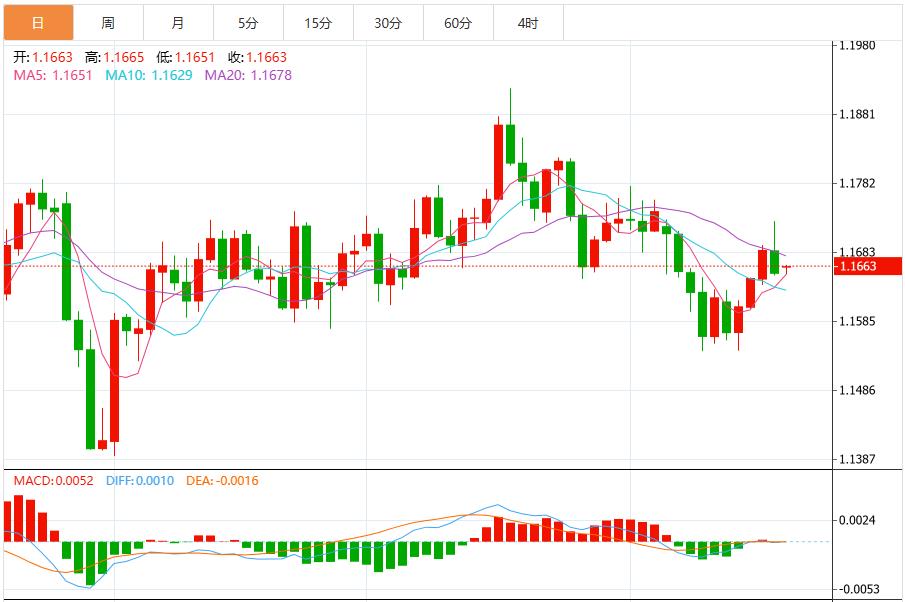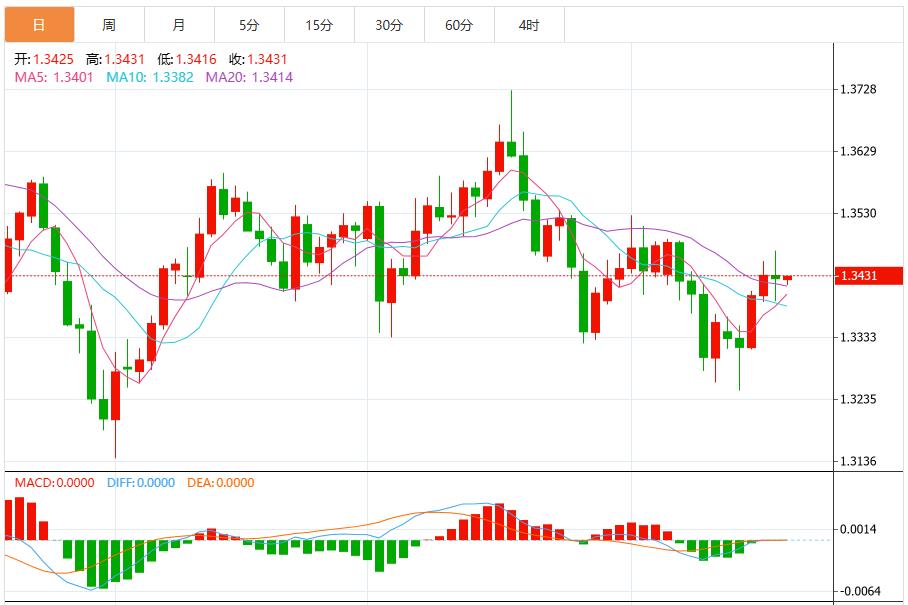Wonderful introduction:
You don’t have to learn to be sad in your youth. What www.vifu.netes and goes is not worth the time. What I promised you, maybe it shouldn’t be a waste of time. Remember, the icy blue that stayed awake all night, is like the romance swallowed by purple jasmine, but the road is far away and the person has not returned. Where does the love stop?
Hello everyone, today XM Forex will bring you "[XM Forex Decision Analysis]: German deflation triggered a euro storm! ECB bosses have made www.vifu.netments one after another, has the US dollar become a safe haven again?". Hope this helps you! The original content is as follows:
The U.S. dollar index maintained slight fluctuations in the Asian session on Wednesday. The U.S. dollar's strength on Tuesday was partly due to changes in Japan's political situation: after the hard-line conservative Sanae Takaichi was elected as Japan's first female prime minister, the yen fell to a one-week low. The dollar was further supported by investors' bets that her government could expand fiscal easing and www.vifu.netplicate the Bank of Japan's path to raising interest rates. The U.S. economic calendar remains absent on Wednesday and Thursday, but the U.S. Bureau of Labor Statistics (BLS) will release its September inflation report. In Europe, traders awaited speeches from European Central Bank (ECB) Vice President Louise de Guindos and President Christine Lagarde.
U.S. dollar: As of press time, the U.S. dollar index is hovering around 98.89. Thanks to the support brought by policy differentiation and the rebound in optimism related to U.S. fiscal stability, the U.S. dollar index will most likely maintain a bullish tone before the release of inflation data this Friday. Technically, as long as the index holds its 50-day moving average, the likelihood of a test of resistance at 99.5549 continues to rise. In the short term, overall risk appetite and global interest rate differentials are still favorable to a stronger US dollar.
Dollar financing has been a focus for central bankers since Trump announced trade tariffs. Technically, EUR/USDThe technical outlook for the dollar has improved slightly, although the pair remains neutral to bearish, trading below the 100-day simple moving average (SMA) at 1.1654. The relative strength index (RSI) fell below neutral 50 on Friday, indicating increasing downside momentum. Key support is at 1.1600, followed by 1.1550 and 1.1500. A decisive break below these levels would expose the August 1 cycle low near 1.1391. On the other hand, resistance lies at 1.1650 and 1.1700. A sustained break above the latter will pave the way for 1.1800 and the July 1 high of 1.1830.


On Tuesday, U.S. full-term Treasury bond yields generally fell, with the 10-year Treasury bond yield falling below the psychologically meaningful 4% mark, closing at 3.955%. The fall in yields www.vifu.netes amid growing optimism that the U.S. government shutdown crisis may be resolved. White House economic adviser Kevin Hassett said a relevant agreement could be reached "soon" this week and the government is ready to step up pressure if necessary. Bond traders are also reacting to the intensified "outage" in the release of U.S. economic data - currently, with the exception of CPI, the release of many key economic data has stalled. The fall in short-term Treasury yields highlights market expectations that if labor data continues to be weak and inflation slows, the Federal Reserve may soon pause raising interest rates or even start cutting interest rates.
In the foreign exchange market, after the hardline conservative Sanae Takaichi was elected as Japan’s next prime minister, the yen weakened sharply. Although the market expects that she will introduce fiscal stimulus policies,This has boosted market sentiment, but the prospect that the monetary policy tightening cycle may be delayed has put the yen under pressure. The yen fell 0.8% against the dollar to 152.01 yen per dollar, its lowest level since October 14, which also helped the dollar index rise to 98.95, a six-day high. Takaichi Sanae is expected to appoint Satsuki Katayama, who advocates a stronger yen, as finance minister, adding to policy uncertainty. Markets are currently cautious, with the Bank of Japan facing conflicting fiscal and monetary signals.
A month ago, economists expected only one more interest rate cut this year. However, the new forecasts www.vifu.nete as Fed policymakers have recently shifted expectations for further rate cuts. Faced with the twin risks of tariffs pushing up already high inflation and further weakening of the labor market, the Fed appears to have prioritized the latter, which also prompted it to implement its first 25 basis point interest rate cut since December last month. Among the 117 economists surveyed, only 2 held different views, and the remaining 115 predicted that the Federal Reserve would cut interest rates by another 25 basis points on October 29, lowering the interest rate range to 3.75%-4.00%. Two others expected a 25 basis point interest rate cut in October and a 50 basis point interest rate cut in December. As for whether to cut interest rates again in December, the majority dropped to 71%. The survey was conducted from October 15th to 21st. The current policy path of the Federal Reserve is characterized by "clearness in the short term and ambiguity in the long term": the short-term market and most economists have reached a consensus of "two more 25 basis point cuts this year". An interest rate cut in October is almost a foregone conclusion. Although the probability of an interest rate cut in December has dropped slightly, it is still a high-probability event. This expectation has also been reflected in the pricing of interest rate futures.
The market sentiment in the euro zone remains fragile. Germany's producer price index (PPI), released on Monday, fell 0.1% month-on-month in September, after falling 0.5% in August. This data highlights the ongoing deflationary trend in Germany (the largest economy in the euro zone) and further strengthens market expectations that the European Central Bank will extend its easing policy cycle. During Monday’s policy discussion, ECB Executive www.vifu.netmittee member Isabelle Schnabel reiterated that “core inflationary pressures remain low”; Bundesbank President Joachim Nagel acknowledged that energy prices have fallen, but warned that “economic growth remains relatively strong.” Some analysts pointed out that the weakening of the euro is "the result of a www.vifu.netbination of structural deflation in Germany, cautious remarks from the European Central Bank, and a moderate rebound in U.S. Treasury yields."
The recent decline of the euro is closely related to "weaker inflation signals" and "cautious remarks from the European Central Bank". Germany's PPI has declined for six consecutive months, with a decrease of 0.1% in September. This data reflects the easing of cost pressures in the manufacturing industry.. Although lower input costs may benefit industry profit margins, it also further strengthens the market perception that "the overall consumer price growth in the euro area is sluggish." ECB policymakers currently face a dilemma: On the one hand, inflation has slowed significantly, and on the other hand, growth indicators remain weak and insufficient to support radical tightening. In the context of stabilizing energy prices and still sluggish real wage growth, policymakers have sent a signal of "patient wait and see" rather than rush to action. Lagarde will deliver two speeches this week, and today's speech is expected to reiterate the ECB's "progressive stance." The market expects her to emphasize "policy is dependent on data" and avoid premature tightening remarks before the October policy meeting. At the same time, Philip Lane, chief economist of the European Central Bank, has always believed that "there is a time lag in policy transmission", so it is necessary to wait to assess the full impact of past interest rate hikes. This cautious attitude, coupled with the weakness of Germany's manufacturing industry, makes it difficult for the euro to gain sustained rebound momentum.
Golden Ten Data reported on October 21 that Tim Murray, capital market strategist of Prudential Group, pointed out that due to the decline in foreign demand, the U.S. dollar has fallen sharply in recent months, and there is room for further depreciation. The strategist said: "The Trump administration's confrontational stance on trade and foreign policy has reduced the willingness of foreign institutions to hold U.S. assets, especially U.S. Treasury bonds." Murray said investors may need to consider adjusting their investment portfolios accordingly (especially fixed income allocations) to prepare for further weakness in the U.S. dollar. He suggested converting some U.S. stock positions into non-U.S. stocks (such assets tend to appreciate in U.S. dollars when the U.S. dollar depreciates) and increase holdings of other currency assets.
Francesco Pesole, an analyst at ING, pointed out that even if Canada’s September inflation data released at 20:30 Beijing time tonight accelerates, the upside space for the Canadian dollar will still be limited. A Wall Street Journal survey showed that Canada’s inflation rate in September is expected to rise to 2.2% from 1.9% in August. But Pesole emphasized that if the core inflation indicator remains near 3.0%, this will have limited impact on the Bank of Canada. In addition, the central bank is focusing on the risks to economic growth and employment caused by tariff policies. Pesole predicts that the Bank of Canada may further cut interest rates on October 29, and will not send a signal to stop interest rate cuts, and bluntly stated that "the Canadian dollar is still our least optimistic currency among the G10 currencies."
ING released a report stating that the new coalition formed by Japan’s Liberal Democratic Party and the Reform Society is expected to limit fiscal expenditure growth and maintain a neutral monetary policy stance. MinJooKang, senior economist at the bank, said that this move means that the loose monetary policy stance previously advocated by Japanese Prime Minister Takaichi Sanae will change.. Given that the Reform Party favors the concept of "small government", the coalition government may focus on promoting targeted industrial investment rather than adopting cash handouts or expanding social welfare. Kang added that the alliance may implement tax cuts and increase energy and fuel subsidies, the latter of which is expected to ease short-term inflationary pressures. ING expects that the Bank of Japan will continue to advance its policy normalization path and may raise interest rates again in October.
The above content is all about "[XM Foreign Exchange Decision Analysis]: German deflation triggered a storm in the euro! ECB bosses have spoken out one after another, and the U.S. dollar has become a safe haven again?" It was carefully www.vifu.netpiled and edited by the editor of XM Foreign Exchange. I hope it will be helpful to your trading! Thanks for the support!
Sharing is as simple as a gust of wind can bring refreshing, as pure as a flower can bring fragrance. Gradually my dusty heart opened up, and I understood that sharing is actually as simple as the technology.